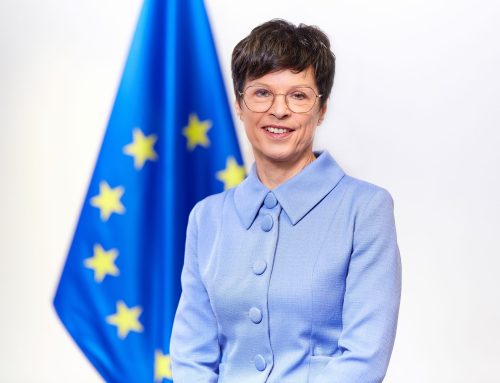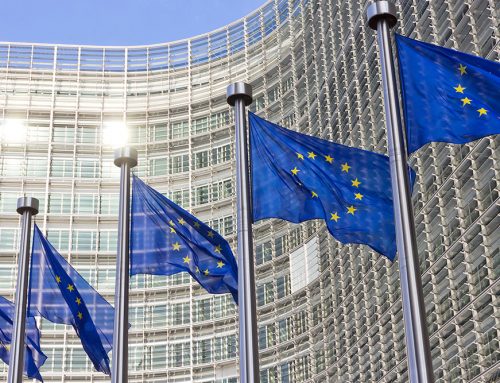Safer Internet Day 2014 is all about a better Internet to encourage people of all ages to create good online content for youngsters. The winners of the best online content are chosen from 1100 entries. The awards will be given to the adults and children from Belgium, the Czech Republic, Hungary, Iceland, the Netherlands, Poland, Portugal, Romania, Russia and the United Kingdom.
Safer Internet Day is being celebrated today in over 100 countries (including the USA for the first time.) In one of thousands of events taking place European Commission Vice-President Neelie Kroes will reward the creators of the best online content for kids and, together with INSAFE, will launch a Youth Manifesto on how to make a better Internet based on ideas from young people.
Neelie Kroes said: “This initiative is exciting – it’s young people speaking up directly about what they want from the most important infrastructure in our world today, the internet. I have no doubt they will follow through with action.”
Safer Internet Day 2014 is all about a better Internet to encourage people of all ages to create good online content for youngsters. The winners of the best online content are chosen from 1100 entries. The awards will be given to the adults and children from Belgium, the Czech Republic, Hungary, Iceland, the Netherlands, Poland, Portugal, Romania, Russia and the United Kingdom.
Neelie Kroes said: “I see children and young people doing amazing things with digital tools. We need to encourage that, help them to be safe, and give them ways to create a better internet themselves – and to stand up against cyber-bullies.”
Winners of the best online content awards in four categories:
- Young individuals – 15 year old Dutch girl Jiami Xili Jongejan for her blog Lifesplash on fashion, school, cooking, and sports.
- Young people groups – Video blog about the Polish language created by the pupils of Saint John Cantius Primary School in Bestwina, Poland.
- Adult non-professional – Paxel 123 games for entertaining, educational games for children in pre-school & primary school; developed by a teacher Anna Margrét Ólafsdóttir from Iceland.
- Adult professional – The Czech creators of the website Web a Webik – Junior Radio offering youngsters recorded fairy tales, online games & other interactive features.
Background
As part of its Strategy for a Better Internet for Children, the European Commission supports the INSAFE/INHOPE network of Safer Internet centres across all Member States.
It also convened the CEO Coalition, under which 31 top tech companies completed a series of changes and introduced tools for better consumer protection.
The works across a range of areas to make the internet safer, including against cybercrime.
A new EU Directive has been adopted to fight large-scale attacks on information systems, along with an overarching cyber security strategy of the European Union being presented by the Commission. In parallel, at Europol headquarters in the Hague, Commissioner Malmström has set up the European Cybercrime Centre, or EC3, dedicated to strengthening the EU’s defences against online organised crime – fraud, theft of credit card details, extortion through virus attacks, and similar crimes.
A Directive has also been adopted to tackle sexual exploitation of children, covering the prosecution of offenders, protection of victims and prevention measures. Furthermore, in December 2012, Ministers of Justice and representatives from 52 countries met in Brussels to form a Global Alliance against Child Sexual Abuse Online. Set up following an initiative from Cecilia Malmström and the US Attorney-General, the alliance – consisting of countries from the United States to New Zealand to Cambodia, to all the members of the EU – have committed themselves to strengthening resources to identify more of the victims appearing in child abuse photos and videos online.
The Commission is also implementing an Action Plan to build trust in the wider Digital Single Market for e-commerce and online services (IP/12/10). That trust will be achieved by improving legal certainty about the rights and obligations of businesses and consumers, by improving the quality and reliability of various online activities and services, by addressing security concerns when it comes to online payments and by combating abuse and resolving disputes more effectively.
Useful Links
Better internet for kids in the EU
Safer Internet Day music video
Hashtag: #betterinternet #SID2014 #saferinternetday
Follow Neelie Kroes on Twitter
| Contacts Email: comm-kroes@ec.europa.eu Tel: +32.229.57361 Twitter: @RyanHeathEU |
Annex: The winners of the best online content awards
Category 1 – Adult non-professional: 1st Iceland, 2nd Hungary, 3rd Belgium
- Entertaining, educational games for children in preschool and primary school
- A portal about architecture to help people better understand the built environment
- 3. A site built by students from ArteveldeHogeschool, Ghent to help kids feel at ease while in hospital.
Category 2 – Adult professional: 1st Czech Republic, 2nd Portugal, 3rd United Kingdom
- The website “Web a Webik Radia Junior” offers young users spoken fairy tales, easy online games, creating pictures
- Three aliens make an emergency landing on Earth. To repair their spaceship they will have to find materials and overcome a series of obstacles. To help them pass each of the obstacles the player will need to use logical thinking, mathematical knowledge and memory schemes.
- 3. The Anti-social network, a film produced by jam-av in partnership with Eastlands Primary School to highlight the problems of bullying and cyber bullying.
Category 3 – Youth – Individuals: 1st the Netherlands, 2nd Poland, 3rd Russia
- Lifesplash Blog rooted in fashion, school, cooking & sports from a 15 year old girl to her peers
- Blog about books and events related to reading, founded by a 10-year-old pupil in 2011. He describes books for children of his own age as well as books for smaller children (he reads books to his 4 year old sister).
- 3. The blog of a Russian teenager touching on history, politics, ICT at school and the ways to earn money.
Category 4 – Youth – Groups: 1st Poland, 2nd Romania, 3rd Belgium
- Video blog about the Polish language created by primary school students and coordinated by Polish language teacher.
- A blog with information for children made by 4 Romanian youngsters
KIDSCAM helps children make films.


